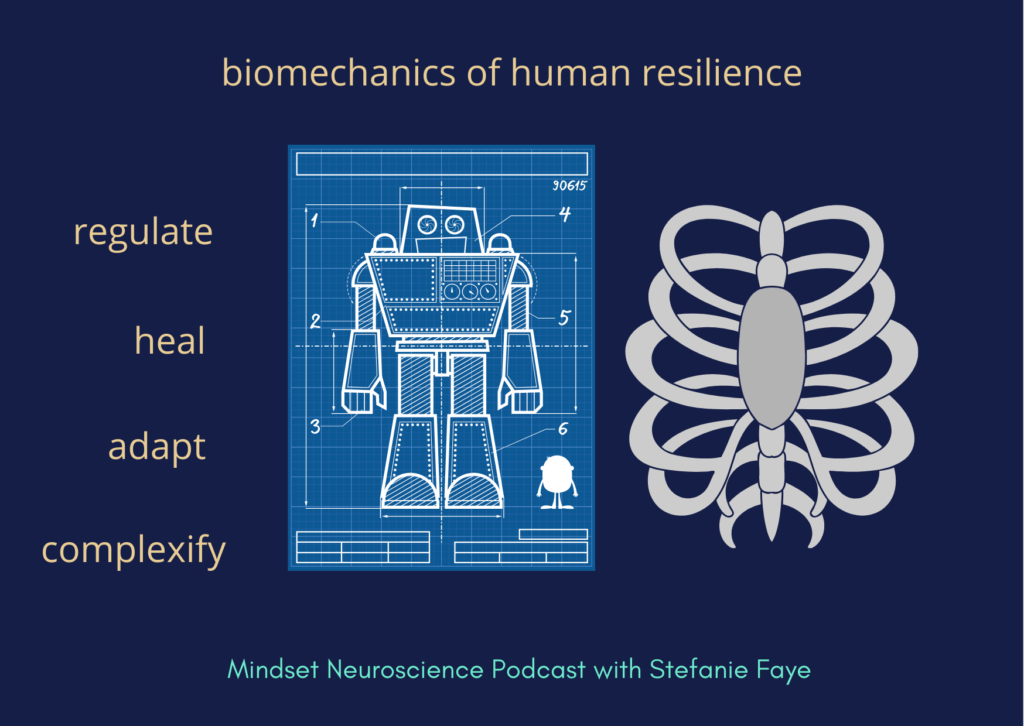"transformation begins with two commitments:
the courage to try new
things and act in new ways
the honesty to no longer
hide from or lie to ourselves".
- yung pueblo

Much of my work to help others has come from integrating neuroscience research and application, and the journey of learning how to navigate life, particularly when it comes to challenges rooted in childhood experiences of unsafety... an unfolding work in progress.
The last two seasons of podcasts focused on the internal world - emotions, sensations, and the interconnectedness of systems of past, present and future.
This season, I'll be focusing on biomechanics and motor systems.

Movement and Communication: the basis of your survival
Your first experience of life was in a liquid environment. There was nowhere for you to go, nothing in particular you needed to do to get your needs met. You floated and ingested.
As you left the womb, you entered a new environment. The cord was cut. Air separated you from all things. You needed to find a way to get your needs met, and deal with gravity, inertia and momentum. To do this, your machinery equipped you with two mechanisms: movement and communication.
They’re what keep you alive today. They are also the basis of vibrations that you send out into the world.

Movement and communication are mechanical translations of your internal world into external vibrations*
- Movement and communication are different than thinking, feeling and sensing;
- They are mechanical outputs that cause vibrations in the air around you
- These vibrations are caused by moving bones via skeletal muscles, such as in your voice, face, breath, hands, and body.
- These vibrations can be perceived by others
- These mechanical outputs are translations of what is going inside of you

The control mechanisms of Initiation and Inhibition have powerful impacts on our daily life, mental health and relationships
As we practice and understand the machinery of our body and what we can control and adjust, the better we can get at initiating when we want to initiate and inhibiting when we want to inhibit. This applies not only to movement of our entire bodies, but also the movements we make as we communicate with each other
When it comes to initiation and movement, we can learn to move in ways that get closer to what we want. To do this, there are three things we can pay attention to and adjust:
- Speed
- Power
- Direction

Speed: when movement is initiated or inhibited too quickly without enough information - this can lead to poor decisions. When movement is not initiated, we don't get feedback as to how to make adjustments.
Power (or volume): When movement is at too high of a volume - too many words, too forceful of voice, too much intensity and pressure, this can lead to undesired outcomes. Not enough power can mean not having the impact you want to have.
Direction: When movement is pointed in the wrong direction, this can mean that you may be creating movements of voice, limbs, body, breath to express anger or sadness at someone who may not be as related to those feelings as you realize.

One of the first works of biomechanics in the 17th century - Giovanni Alfonso Borelli, Public domain, via Wikimedia Commons
Why we need more awareness of movement and biomechanics
We are at an important point in our history. We are becoming aware of how little the world around us we can truly control. This means we need to make a decision:
- learn how to use what we do have control over (the musculoskeletal system of our machinery) and learn how to expose ourselves to unpredictable situations so that our brain-body system can become as flexible as possible,
- stay in predictable comfort zones that don’t challenge our brains to come up with flexible movements and adjustments
In this episode, I explore:
- the difference between our autonomic and somatic nervous systems and why knowing the difference gives us power to change
- biomechanisms we use to protect or defend ourselves that are tied to our past and may not be helpful to us in our current situation (as I am learning, these can be hard habits to break)
- how we can experiment with new patterns using skeletal muscles to control our breath, voice, eyes, hands and body within our social interactions
- 10 key mechanical adjustments we can make to move in this world in ways that optimize our functioning and sense of fulfillment
- how our hyper-focus on words & devices makes us lose touch with our bodies, with our environment and with all the non-verbal aspects of life
In later episodes, I’ll go into other aspects of biomechanics and movement related to adaptability, resilience and complexity. This episode focuses on biomechanics of social communication.



